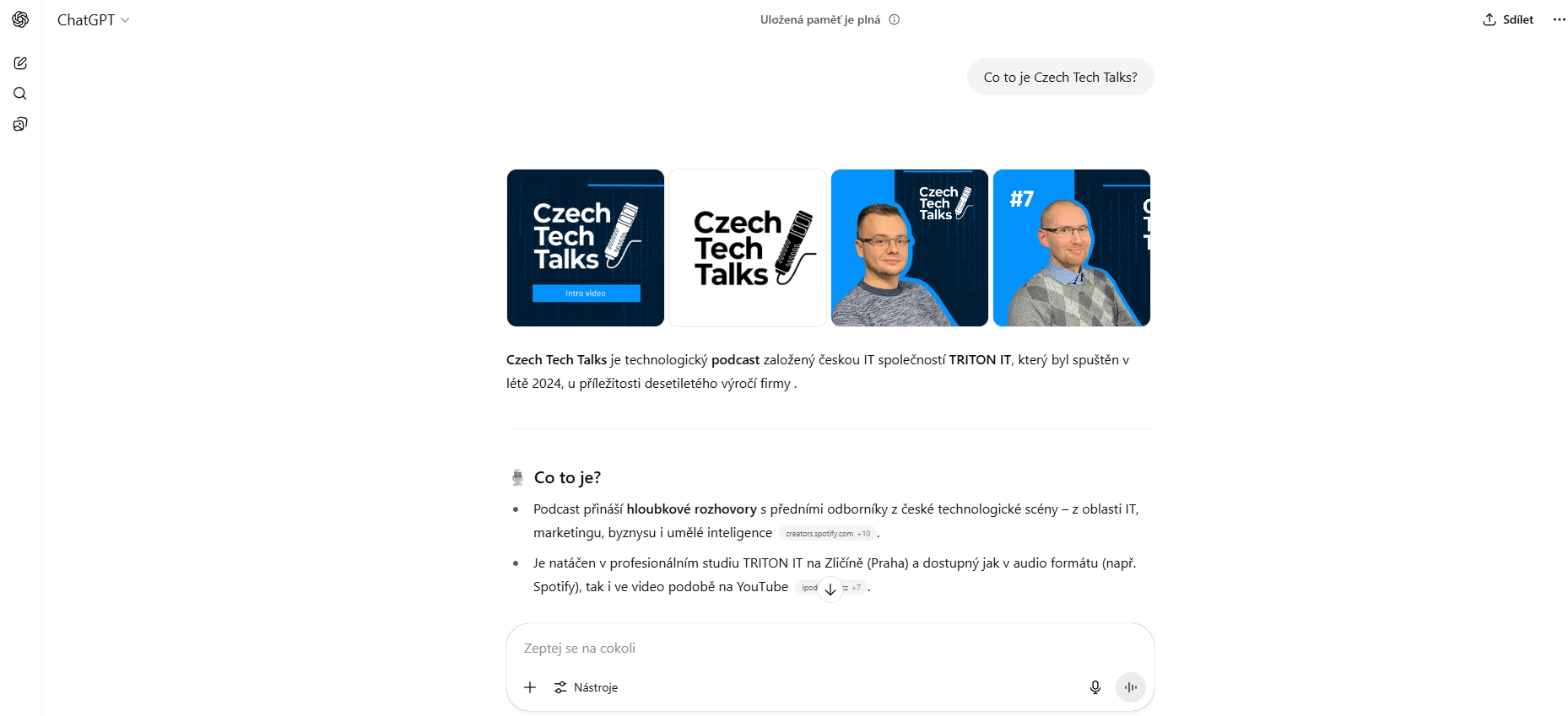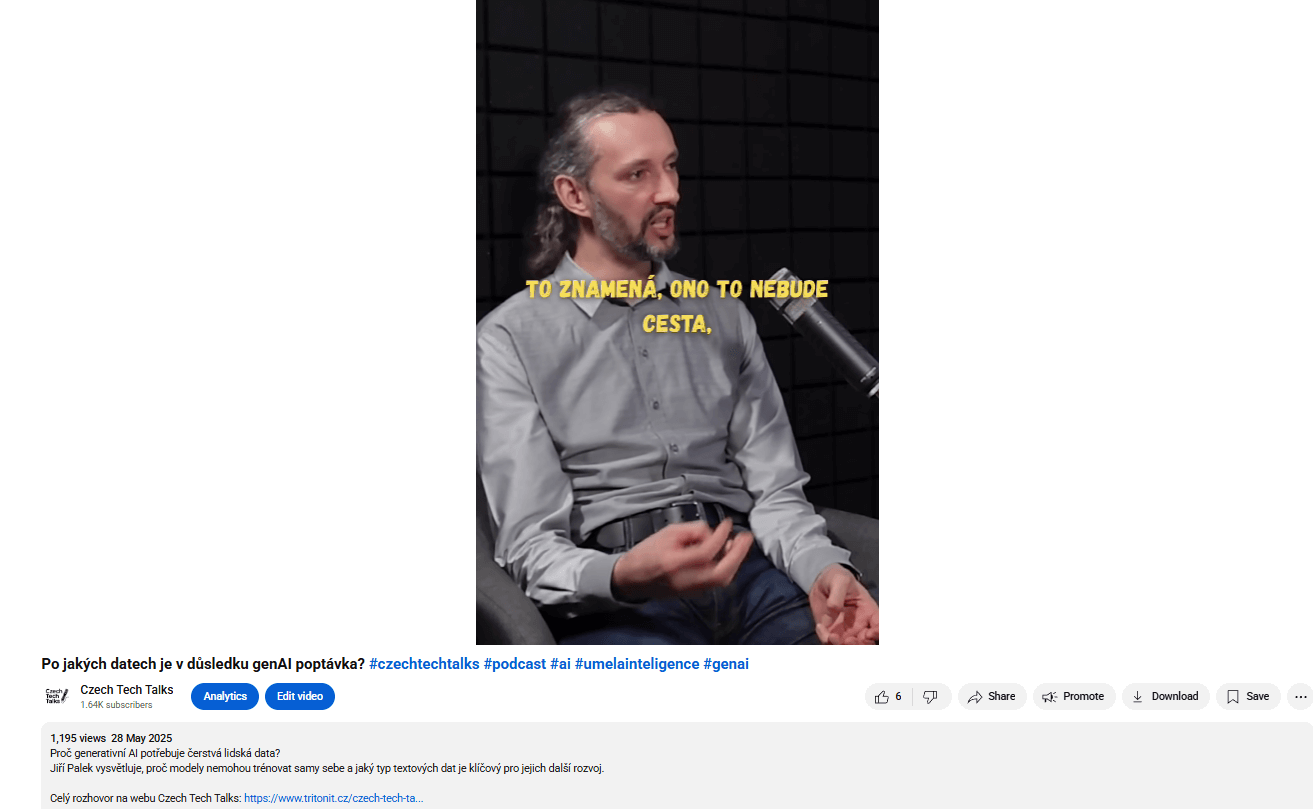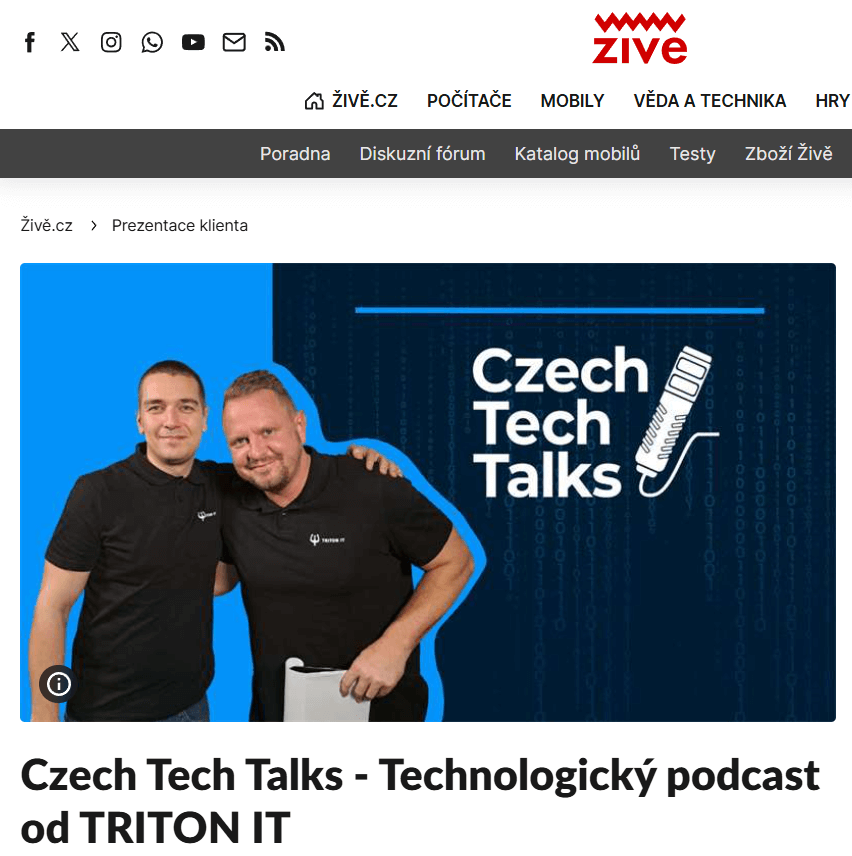How to create digital content that people find and algorithms understand
In the digital environment, it is no longer enough to create quality content with the hope that the audience will find its way to it on its own. The way people search for information - whether through search engines or artificial intelligence tools - has changed dramatically. To be effective, content not only needs to be useful and well-structured, but also readable by the systems that decide how to display it. How do we think about creating content that is traceable, relevant and of long-term benefit - both to customers and to the digital tools that decide its visibility today?
SEO vs. GEO
In recent years, we've become accustomed to the acronym SEO - Search Engine Optimization. Copywriters used to write copy primarily with the aim of getting websites the best possible rankings on Google, Seznam and other search engines. Today, however, the marketing world has taken a step further.
Artificial intelligence has brought about the term GEO - Generative Engine Optimization. While SEO focuses on getting your site found by users through search engines, GEO addresses the question of how to become the preferred source of information for AI language models. Today, ChatGPT, Claude, Gemini and other AI assistants are no longer just tools - they are the new "search engines" that millions of people use every day for information retrieval.
What is GEO?
GEO (Generative Engine Optimization) is the optimization of digital content for AI language models. It is a systematic approach to creating and structuring information to maximize the likelihood that this information will be used by AI systems as a primary resource in answering user queries. GEO extends traditional SEO (Search Engine Optimization) to include dimensions specific to the operation of large language models, including semantic relevance, contextual richness, and structured data presentation.
GEO (Generative Engine Optimization) vs. GEOlocal targeting
The term GEO, as we work with it in this paper, is unrelated to geo-local ad targeting (e.g., in RTB systems), where users are shown banners based on their physical location. In the context of this paper, GEO refers to brand visibility across the entire digital space, e.g., in ChatGPT. It is important not to confuse these terms.
How to create AI-friendly content?
Optimizing for language models has its own specifics. AI "reads" and processes content differently than traditional search engines. The key principles that modern content must meet are:
Structure and clarity
Language models prefer well-structured content with a clear hierarchy of information. The emphasis is on:
- Concise headings and subheadings
- Numbered and bulleted lists
- Short, clear paragraphs
- Logical structuring of information
Contextual richness
AI needs context to understand meaning. Texts should:
- Include definitions and explanations of key terms
- Link themes and concepts
- Provide background and context
- Include relevant examples and case studies
Factual accuracy and timeliness
Language models 'remember' information and reproduce it in different contexts. It is therefore essential to:
- Verify all the facts presented
- Update outdated information
- Cite sources and references
- Use precise and unambiguous wording
Semantic relevance
AI understands meaning, not just keywords. Important:
- Use synonyms and related terms
- Covering the topic from different perspectives
- Creating thematic clusters of content
- Linking related articles and resources
A concrete example: the Czech Tech Talks and GEO Strategy
The best way to understand GEO in practice is with a concrete example. In our case, it's the Czech Tech Talks podcast, where we've been gradually building AI awareness of our brand and content in parallel with its creation.

Today, AI already knows where to look for information about what Czech Tech Talks represents. When you ask ChatGPT or Claude about our podcast, you get relevant and accurate information from several different sources. When you ask about a specific topic that we discuss in each episode of the CTT podcast, you'll often find Czech Tech Talks as your source. This result is not accidental - it is the result of a systematic GEO strategy.
YouTube shorts
A key element of our strategy is dedicated video shorts on YouTube. Each short focuses on one specific topic in the field of technology. Instead of general overviews, we create content such as "How AI is being used for air traffic control" or "What are the subsidies for AI-enabled development".
In addition, for each short, we create carefully thought out descriptions that include precise definitions of the technical terms used and the context and context of the topic being discussed. In addition, we enrich the shorts with relevant keywords and hashtags or links to related content.

All shorts are then clearly labeled as Czech Tech Talks content, which helps the AI understand that they belong to one topic series.
Publications
The second pillar of our GEO strategy is targeted publishing through the CTK news agency and the PlaCla publishing tool.
CTK (Czech Press Agency)
We also use the publication of press releases through CTK, specifically the Protext service, to raise the profile of selected projects, such as our podcast Czech Tech Talks. However, the key to success is not the distribution itself, but the quality and informational value of the news itself. It is not a normal PR message - every news release we send via CTK contains specific outputs, such as a summary of an expert debate, original data from research, or a reporting approach with a focus on current events in the industry.
Reports prepared in this way have a higher relevance for editorial offices, which is why CTK subsequently distributes them to nearly 1,000 editorial offices across the Czech Republic. We always include links to specific podcast episodes in each report, which not only raises awareness of Czech Tech Talks, but also brings listeners directly to our YouTube channel or website. With this approach, we build our digital footprint beyond our own channels - and increase the chances that relevant information about us will be traceable by AI tools.
PlaCla
We use PlaCla as a complementary tool for targeted publication of technical articles and content related to our Czech Tech Talks podcast. Compared to press releases distributed through CTK, where we rely on the power of one well-prepared release distributed across newsrooms, PlaCla allows us to strategically manage the selection of specific media outlets and tailor the message to the exact type of audience we want to reach.
When selecting magazines, we look far beyond thematic affinity - we focus on the quality of the medium, the authority of the domain, the way the content is handled, and whether the site has a real audience or serves merely as a repository for sponsored articles with no real impact. We use our own research and domain authority checking tools to see where a publication has a long-term effect, not just a temporary link.
We generally prepare the texts ourselves to maintain a consistent level of quality and expertise. We use editors only in exceptional cases and always with the possibility of intervention before publication. This enables us to effectively extend the TRITON IT brand's information field beyond our own website via PlaClu - and build a trusted footprint in industry magazines that is used not only by human readers, but also by algorithms when indexing content across the web.
Why this combination works for Czech Tech Talks
When promoting the Czech Tech Talks podcast, we don't assume that one distribution channel is enough. The combination of CTK and PlaCly has worked well for us because each of these tools fulfills a different role within our communications strategy - and together they cover both a broad information space and a targeted reach to a relevant audience.
We build press releases distributed through CTK as information-rich units that deliver value even without the context of our brand. As a result, the news appears on news portals and in editorial outlets where a conventional PR message would fail. CTK's approach helps us build credibility across the general and specialist media space.
PlaCla, on the other hand, is used to target specific communities - we select magazines that are read by people in the IT and technology business, while analysing their authority, natural reach and the quality of previous publications. It's not about being "seen everywhere," but being seen where the content really resonates - for example, with tech-oriented readers who click through to a specific podcast episode based on a technical article.
Both approaches share a common goal: to create a meaningful digital footprint that has value for both readers and algorithms. Through this combination, we ensure that not only is someone writing about us - but that the right people, at the right time, in the right place, are getting information about Czech Tech Talks.

The future is in GEO
GEO isn't just a trend - it's a necessity for any brand that wants to stay relevant in the AI era. Optimizing for language models requires a systematic approach, quality content and a long-term strategy. The key to success is understanding that AI doesn't just work with individual pages, but builds a comprehensive picture of your brand from all available sources. That's why it's important to coordinate all communication channels and ensure a consistent, quality presence across platforms.
Do you want to build effective content not only for users?
Related articles
The digital world is undergoing a revolution that many have not yet fully appreciated. Two seemingly independent forces are coming together...
A software architect is a professional who translates business requirements into technical design. In smaller and medium-sized companies, this...
The mayor of Křeslice, Prague, was looking for a simple way to instantly share information from the field among citizens. He knew that citizens...